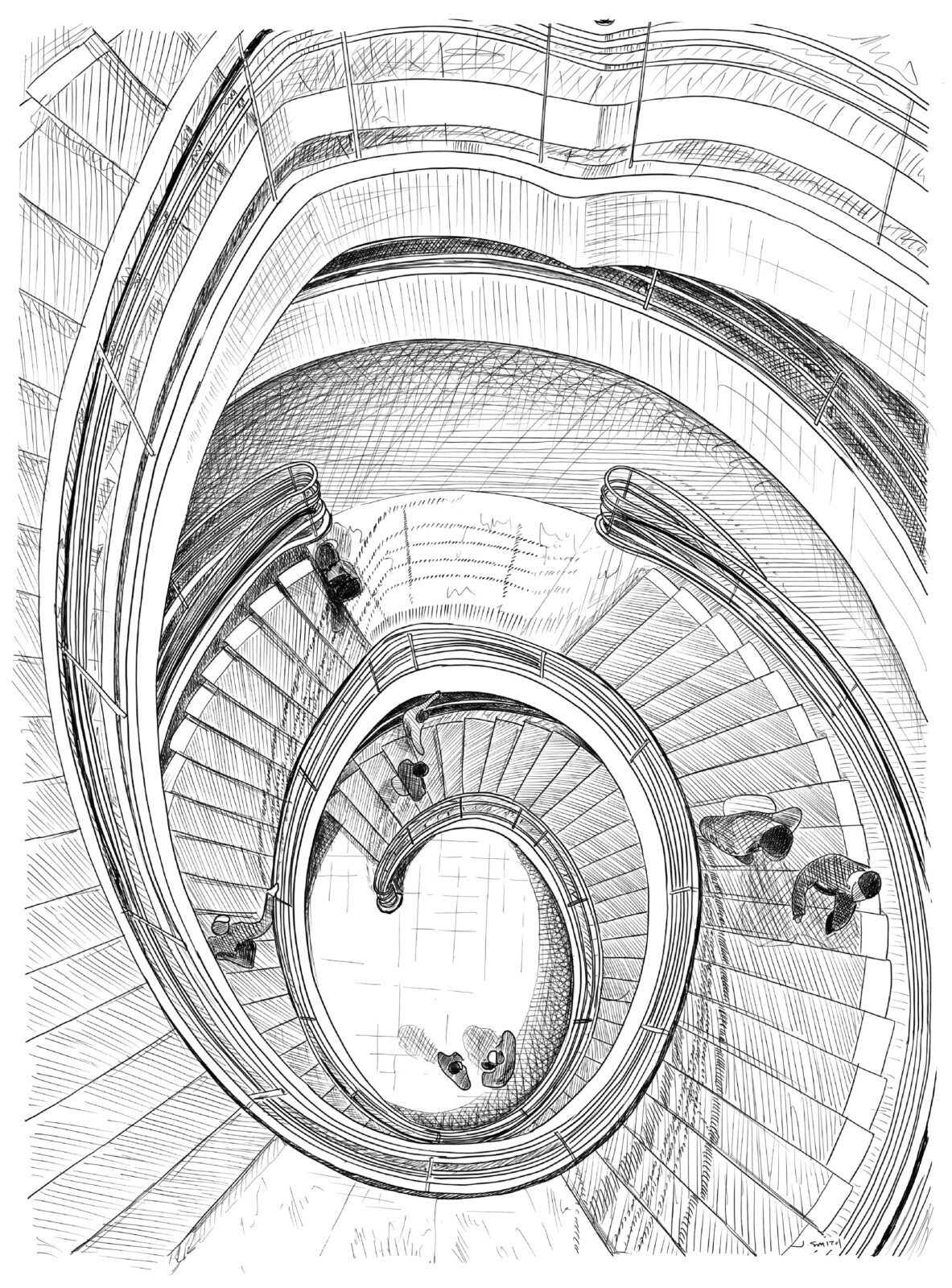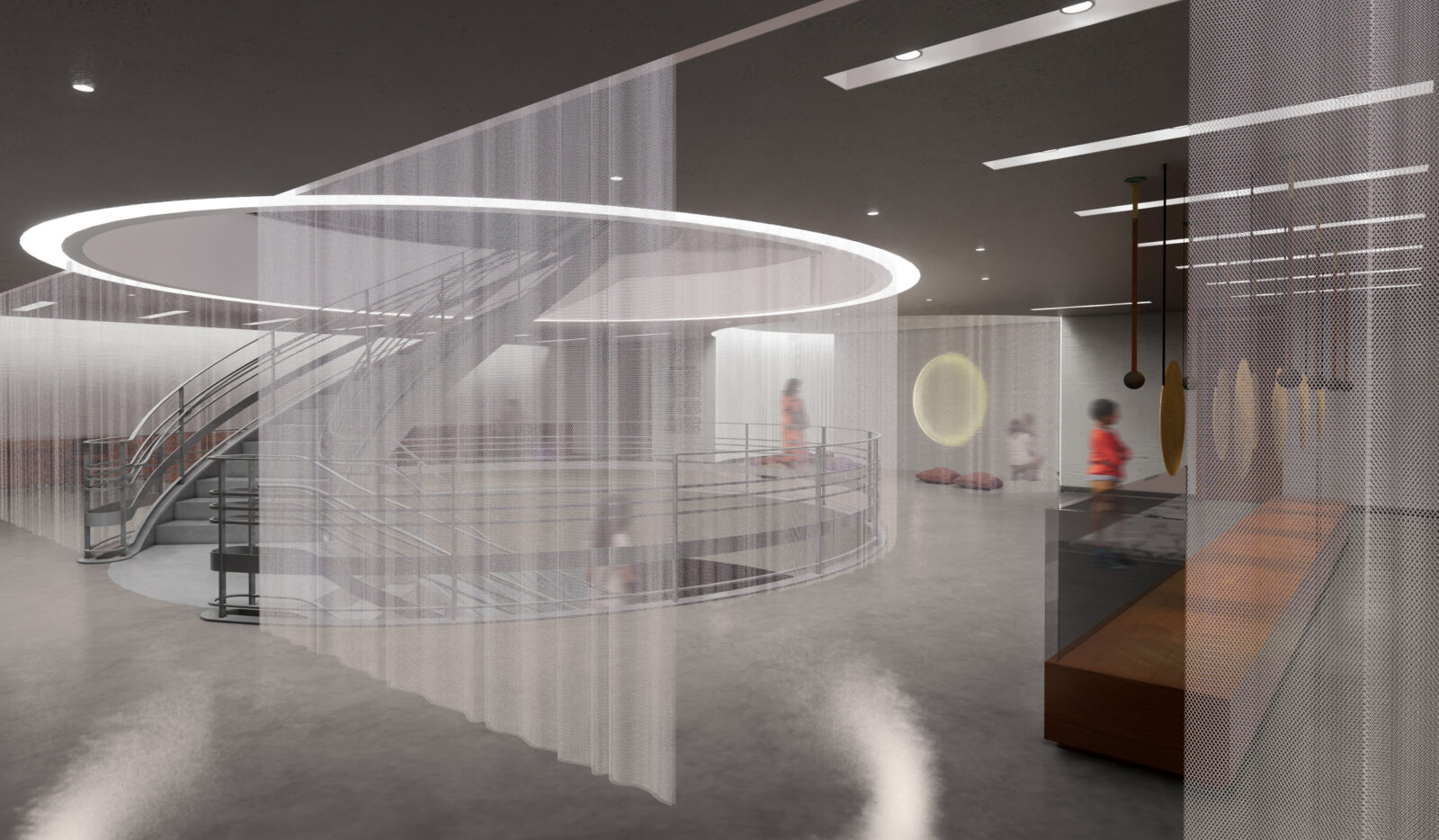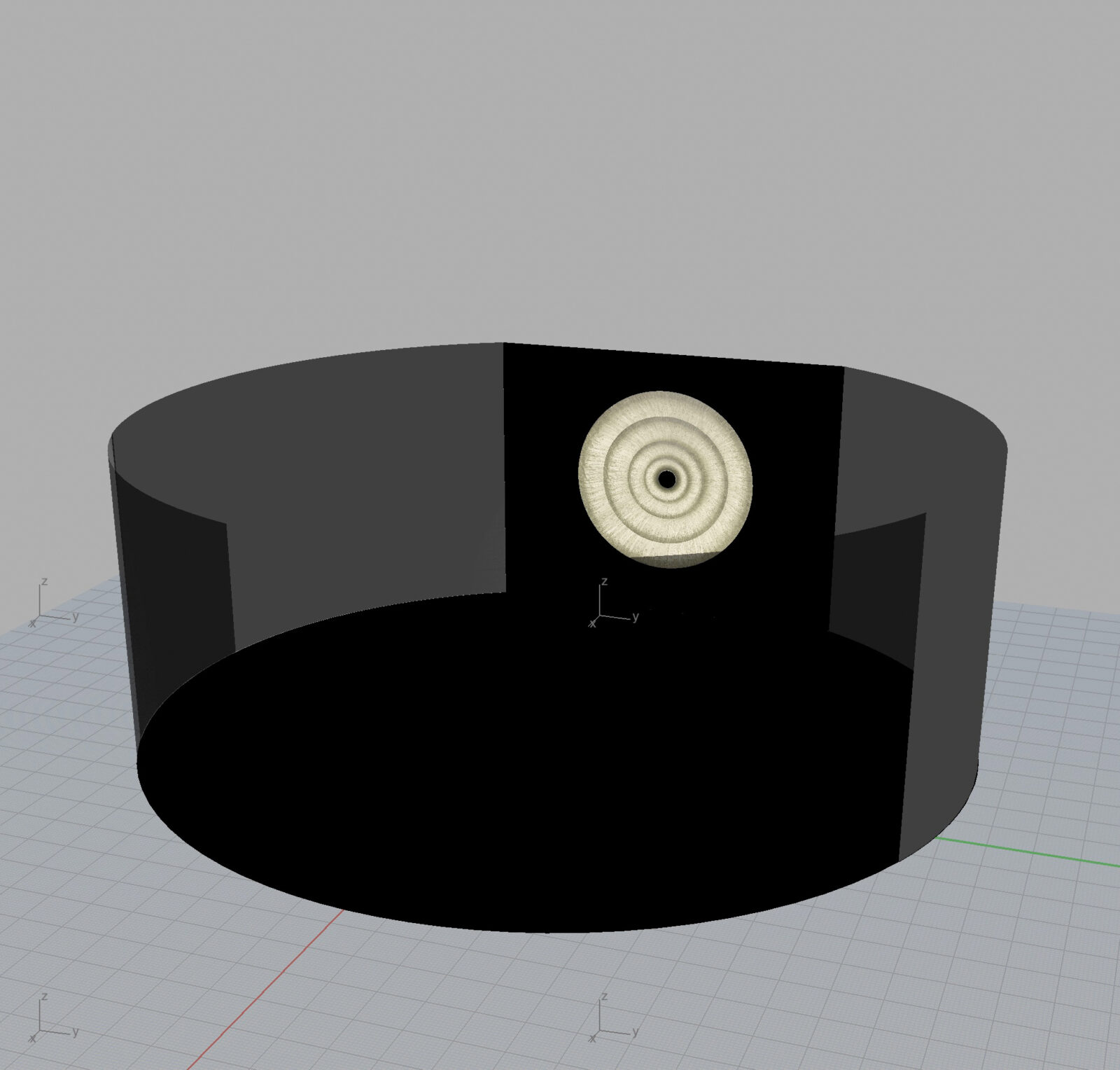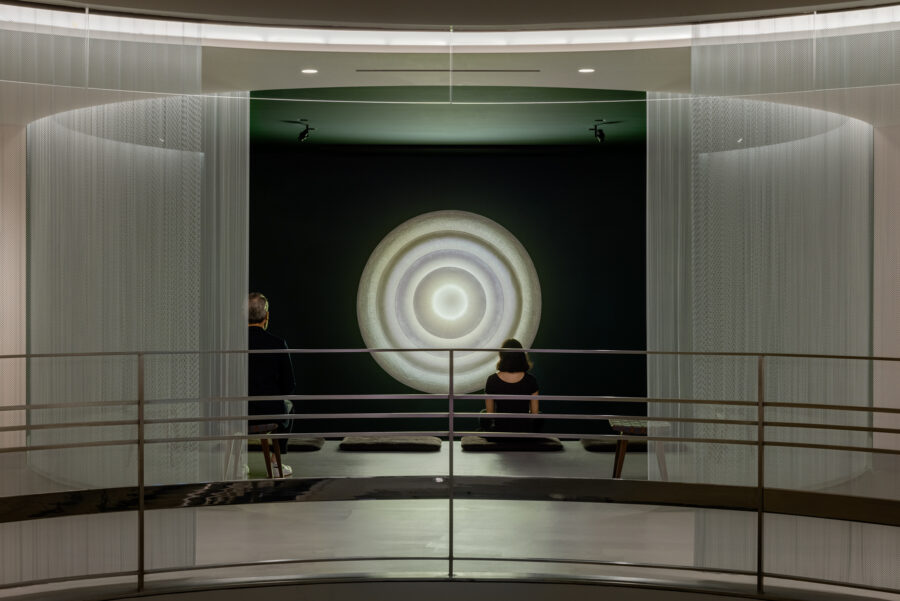
Illustration by Jesse Spencer Smith

Illustration by Jesse Spencer Smith
In 1998, when Shelley and Donald Rubin first walked through the empty Barneys building that would become the site of their future museum, the structure was in disrepair. “The building was falling apart, filthy, cold, and unattractive,” Donald Rubin told me, “There were broken fixtures and trash everywhere.” A couple of weeks later they returned and walked the Andrée Putnam-designed marble staircase six floors to the top. Something clicked. As Shelley and Donald recall, “We talked about how the staircase could be incorporated into the design, and how the museum could represent a journey, from floor to floor, moving not only through the history and meaning of Himalayan—primarily Tibetan—art, but upward toward the spirit of human enlightenment that inspired the art. We thought that the museum could be a journey that might reflect a spiritual experience, as it is in temples all over the Himalayas.”
The Rubins realized that not only was the staircase iconic but its spiral shape and the way it articulated the circular space surrounded by quadrants on each floor was reminiscent of a mandala. The staircase also rises in the east, which is how you approach a sacred site and circumambulate in a clockwise direction.
A mandala—Sanskrit for “sacred center”—is a cosmological diagram used by Buddhist practitioners as they seek enlightenment. They are sacred abodes of gods and deities with a particular deity at the center. A mandala can take the form of a painting on cloth, an impermanent creation made of colored sand, or a large three-dimensional structure. In Tantric Buddhism the mandala is used for yidam practice where practitioners visualize themselves as an enlightened being in hopes of adopting their qualities. This visualization helps to transform our everyday emotions into those of enlightened beings.
Designer Milton Glaser created the Museum’s original graphic and brand identity using the circle and square motif of the mandala in his designs. The mandala also makes an appearance in a subtle detail at the Rubin entrance. Designed by architect Erich Theophile, each bronze door handle contains a sacred Buddhist symbol surrounded by a mandala.
Though the design of the mandala is in the very DNA of the Museum, the Mandala Lab, debuting in August 2021, will take the idea of the sacred diagram to the next level. The innovative project will transform the third floor and mark the first time the Museum is using the shape of the building to invoke the palace floor plan of a mandala itself.
Combining art, cognitive science, and contemplative practice, the Mandala Lab takes the seventeenth-century Sarvavid Vairochana Mandala from the Rubin collection and Buddhist teachings as inspiration for experiences of social and emotional learning. According to Tim McHenry, deputy executive director and chief programmatic officer at the Rubin, “We identified what was needed to translate the teachings into twenty-first-century terms, then came up with exercises to make those teachings real.”
Brooklyn-based architectural team PRO, led by founding architects Miriam Peterson and Nathan Rich, are re-envisioning the space, which will also house the Museum’s education center. As Rich told me, “We’ve always thought about architecture’s ability to ground people in place and in the moment, and the Mandala Lab has been a great challenge and opportunity.” With that in mind, PRO set out to create an experience on the third floor that was different from the rest of the Museum yet “still preserved some of the concepts and even the literal interpretations of the mandala.”

Gallery rendering © Peterson Rich Office / The Rubin Museum of Art
While the moodier lighting on the other gallery floors was designed for solo visitors or small groups to contemplate works of art, the Mandala Lab is about collective experience and will be illuminated by additional light sources. During the day, bright light drawn from the oculus above will let you see right through a fine metal mesh scrim installed around the stairs, while in the evening the scrim will become more opaque. “The liminal quality of light was something that we felt also evokes the ideas of the mandala,” Peterson says.
The Mandala Lab will be defined in many ways by its openness, the ability to see each aspect of the experience from wherever you are. “We wanted it to be clear that you’re not in the traditional gallery space,” Senior Manager of Exhibition Design Brianne Muscente-Solga told me. “We’re blowing out the structure, including the walls that are in that space, to give you a clear vista to the various points of the gallery. You’re not seeing things in piecemeal; you’re soaking it in all at once.”
Ponlop Rinpoche, a Buddhist teacher and an advisor to the project, explains that each section of the Mandala Lab “offers rich methods of transmuting or transforming emotions or mental afflictions into wisdoms.” The journey begins in the south quadrant. Here you’ll recognize which part of pride concerns you at the moment—arrogance, complacency, low self-esteem—then check it as if it were a wet umbrella and you had just entered the Museum.
Next you step into the west, where you’ll convert attachment into a wisdom that may ultimately resemble empathy—all by following your nose. This quadrant is structured as a scent library. Open one of the “books” and you’ll be greeted by a puff of scent and asked to relate the smell to a feeling or emotion. On view will also be artist-created videos illustrating memorable olfactory experiences. Laurie Anderson, for instance, recalls the smell of cigarette smoke and recounts what memory that scent triggers for her.

Artist Palden Weinreb’s rendering of the north quadrant of the Mandala Lab.
When you move on to the north, you’ll encounter a set of glowing circular shapes created by Tibetan American artist Palden Weinreb. Here a meditation exercise based on breathing will help transform jealousy into a sense of common accomplishment. Rich and Peterson are creating a rounded space for the experience so people can face both the light installation and one another. This section of the Mandala Lab will be lined with acoustic insulation to absorb noise, making the space sound, look, and feel different. Sound won’t move around as much, creating a dampening quality to the walls. As Rich says, “This will enhance the feeling of being present and focused in that collective breathing experience.”
The journey continues in the east quadrant, where you’re invited to convert anger or hatred into wisdom with the help of Indian American percussionist Drums Shivamani and eight gongs, designed by different artists, suspended above a small pool of water. Hit the gong, immerse it in water, then use patience to see your reflection untrammeled.
Then remember when you first entered the Mandala Lab and checked an element of pride? It’s time to retrieve it and check in on the other three emotional states you’ve explored: attachment, jealousy, and anger. Like the wet umbrella you may have checked at the door, hopefully they have changed a bit, maybe dried out. You have followed the path of the mandala, turning pride into equanimity, emotions into wisdoms. As you leave you’ll receive a mantra. Hold on to it and refer to it when you feel as if your umbrella is getting wet again.
Now you’re ready to step out onto the landing and enter the core of the mandala. You can’t step into it literally, because it’s a vacuum made by the spiral staircase. But you’re entering the world where the teachings need to be applied. As McHenry told me, “It’s an open-ended question: How long will the calibrations last, and where will these teachings take you on your ongoing path to the center?”
The Mandala Lab opened at the Rubin Museum in October 2021.

Howard Kaplan is an editor and writer who helped found Spiral magazine in 2017. He currently works at the Smithsonian and divides his time between Washington, DC, and New York City.

Rubin Museum
150 W. 17th St., NYC
Get the latest news and stories from the Rubin, plus occasional information on how to support our work.